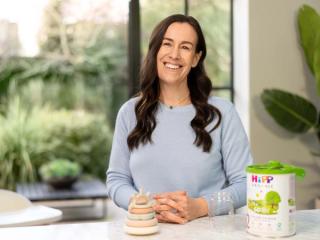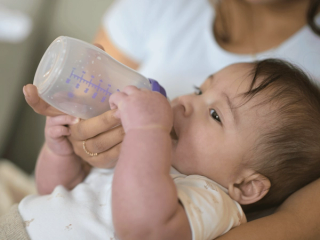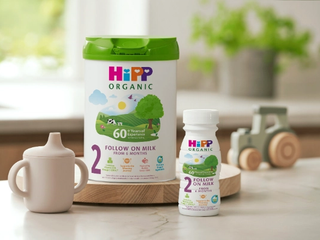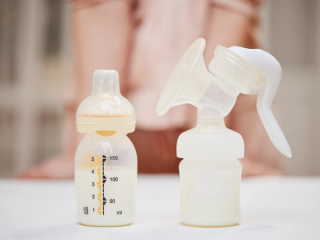
- Home
- Advice Hub
- Baby
- Baby Feeding
- Choosing And Changing Formula Milks
Choosing and Changing formula milks
All formula milks meet strict regulations to make sure they are nutritionally adequate for your baby - but choosing one can still be complicated. Here's what you need to know.
Formula milk comparison – which formula milk is best for your newborn?
Why formula packs include breastfeeding information
Choosing formula milks – what to consider
Healthy Start card
Special formula milks for your baby
Switching formula milks – when and why change
Changing your formula milk – how to do it safely
When can I introduce cows' milk?
Travelling with baby formula: key tips
How to choose formula milk FAQs
Formula milk comparison – which formula milk is best for your newborn?
Choosing the right formula milk for your family can feel like a difficult decision. But the good news is, all formula milks meet strict regulations to make sure they are nutritionally adequate for your baby. In fact, formula milks are the most strictly regulated of all food stuffs to ensure they provide the high-quality nutrition your baby needs; but which brand should you choose to meet you and your baby’s preferences? This article will cover all the basics around choosing formula milk, and what to consider if you want to change formula milk.
Why formula packs include breastfeeding information
Breastfeeding is best for babies, and although the Government and health authorities recognise that not all families choose to or able to breastfeed, they want to ensure that parents planning to bottle feed have considered their decision very carefully. The formula milks industry is highly regulated, to protect and promote the safety and wellbeing of mums and babies.
Regulation that guides companies like HiPP includes the WHO’s International Code of Marketing of Breast-milk Substitutes; the UK government’s regulation on the nutritional content and marketing of milks; and the Advertising Standards Authority codes of practice, amongst others.
As an output of this; part of our regulatory requirements are to include an “important notice“ statement containing specific and informative information for parents and carers.
HiPP’s number one priority is to support parents, whether they are breast, formula of combination feeding; we believe that all parents should be supported however they choose to feed their baby.
Choosing formula milks – what to consider
Today’s standard formula milks are usually based on either cows’ milk or goats’ milk, with carefully adjusted carbohydrate, protein and fat levels, and enriched with specific levels of vitamins, minerals and nutrients. They do not all have the exact same recipe or manufacturing processes and some also include additional ingredients not mandated by the regulations, which is why you might find your baby prefers one over the other. There are also different formula milks for different age brackets and milks for special medical purposes to accommodate health issues such as reflux, dairy allergy, etc, which are used under the advice of a GP or other Healthcare professional. Other factors – for example, recommendations from friends, family and your healthcare professional, or a preference for organic ingredients – may also inform your choice of formula milk.
Most brands of formula milk will offer three categories of milk that meet the nutritional requirements of healthy babies for the first year and beyond:
- First infant milk 1 - suitable for use from birth onwards. It is the only safe alternative to breastmilk for babies under 6 months.
- Follow on milk 2 - for use from 6 months, as part of a mixed weaning diet.
- Growing up milk 3 - from 12+ months onwards, as part of a healthy balanced diet.
Healthy Start card
In England, Wales and Northern Ireland, parents and pregnant women receiving a qualifying benefit can apply for a Healthy Start card, which provides an allowance to buy food and milk for children under the age of 4. Healthy Start cards can be used to buy cows’ milk-based infant formulas suitable from birth. They cannot be used for follow-on milk or growing-up milk.
For more information visit the Healthy start website: Get help to buy food and milk (Healthy Start)
Special formula milks for your baby
Formula milks for special medical purposes are available for babies with special dietary needs, such as allergies, intolerances or feeding problems such as colic, constipation or reflux . These milks should only be used on the advice of your GP or healthcare professional. If you think your baby needs a particular type of special milk, you should always discuss it with them.
Switching formula milks – when and why change
If your baby is happy, healthy, gaining weight steadily and has regular bowel movements, you don't need to change the formula milk you are using in their first year. If you have any concerns about your baby's feeding, however, it's best to speak to your health visitor or GP about it first.
From 6 months, you may choose to change to a follow-on milk. These milks, which are usually labelled as stage 2, are formulated to be used alongside a varied weaning diet and have been developed to meet the nutritional needs of older infants and contain higher levels of some nutrients such as Vitamin D and iron.
From 12 months, when babies become active toddlers, you may choose to switch to a growing up milk. Growing up milks are specially formulated to provide important nutrients like iron and vitamins that whole cows’ milk may be too low in to fully meet a toddler’s needs at that age, and can complement their diets as they grow.
Changing your formula milk – how to do it safely
If you decide you want to change your baby’s formula milk to a different brand or stage (e.g. from infant to follow-on milk when they reach 6 months), or even if your current brand launches a new formulation, there are a couple of things to bear in mind.
First is the type of protein-based formula milk your baby is currently drinking. There are four main types: cows’ milk based, goats’ milk based, soya-based and hydrolysed protein formulas. Unless you've been advised by your GP or health visitor to switch from one type to another (usually because of a suspected allergy), you'll probably want to stick with the type of formula you're already using. For most parents, this is a cows’ milk-based formula.
You'll also want to consider your baby's age. If you've already started weaning, the transition from one formula to another can be quite quick. Try changing one feed on day one, followed by two feeds on day two, and so on until all feeds have been changed to the new formula.
If your baby is still only having milk, the transition may take a little longer. To start with, try gradually switching just one feed on both days one and two, and then switch two feeds on days three and four, and so on.
If you are changing to a different brand, instead of just a different stage of formula, you may want to swap as slowly as one feed every 2-3 days to allow your baby time to adjust to the new formulation.
Always consult a healthcare professional before making any changes or if you have concerns. If you would also like to speak to our customer services team for more information on HiPP formula milks……
For further information, read our formula milk FAQs .
When can I introduce cows' milk?
Babies shouldn’t have cows' milk as a main milk drink until after age one. However, once you’ve started introducing solid foods at around 6 months old, it’s fine to use small quantities of whole cows' milk to mix your baby's foods, as long as there's been no evidence of an allergy .
Both pasteurised whole milk and semi-skimmed milk can be introduced as a main drink once your child is 1 year old Skimmed milk is best avoided until age 5 or later, because it doesn't provide enough calories for young, growing bodies.
Travelling with baby formula: key tips
It’s worth doing some research before you travel to see whether your baby's usual formula milk will be available at your destination (and whether it's got the same ingredients as it does at home). To be on the safe side, it’s often best to take all the formula you'll need along with you, making sure you have enough to cover any delays. You’ll also need to pack your feeding equipment , including something to sterilise all the bottles and teats, if baby is under 12 months of age.
Remember that tap water should always be boiled before you prepare a feed. If you're not sure the local tap water is safe to use, you can make up your baby's formula using boiled bottled water; just choose a brand that has no more than 200 mg per litre of sodium (‘Na’), and no more than 250mg per litre of sulphate (‘SO’ or ‘SO4’).
How to choose formula milk FAQs
Please speak to your Healthcare professional about which formula milk is the best for your baby, especially if your baby has specialist needs or requires a food for special medical purposes.
As a general guide to standard formula milks, there are 3 main types for babys and young children:
First infant milk 1 is suitable for use from birth onwards, and is the only food recognised by the World Health Organisation as a suitable and safe alternative to breastmilk.
HiPP Organic's first infant milk is a nutritionally complete breastmilk substitute, suitable from birth, and contains all the nutrients your baby needs if they are not being breastfed.
Follow on milk 2 is suitable for use from 6 months, and is formulated to be used alongside a varied weaning diet. HiPP Organic follow on milk has been developed to meet the nutritional needs of older infants and contains higher levels of some nutrients such as iron.
Growing up milk 3 is for use from 12+ months onwards, as part of a mixed diet.
HiPP Organic Growing up milk is a choice that’s right for some families; some parents choose to transition their little ones onto at from 12+ months as it complements their diets as they grow. Growing up milk is fortified with important nutrients, such as vitamin D, and calcium and iron.
All formulas meet strict regulations to make sure they fulfil your baby’s nutritional needs, manufacturing processes and additional ingredients can vary across different brands. The good news is that formula milks are the most strictly regulated of all food stuffs to ensure they provide the high-quality nutrition your baby needs; but choosing which one to use to meet you and your baby’s preferences can seem like a hard decision.
After speaking to your HCP + friends and family for advice, consider what’s also important to you - whether that be budget, quality of ingredients, organic certification, etc…
Conclusion
Choosing a formula milk can feel daunting, but just like so many things with parenting it’s a little bit of trial and error. See what suits your baby and your family – and remember you can always change your mind down the track. If you have any concerns about how your baby is reacting to formula milk, or if you have questions about the best path for your family, speak to a healthcare professional.
Important Notice
We recognise that breastfeeding is best, providing many benefits to both mothers and infants. We also recognise that every parenting journey is unique, and we are here to support you through this journey, however you choose to feed your baby.
If you choose to breastfeed it is important that you eat a healthy well-balanced diet in preparation for and during breastfeeding. Before deciding to combination or formula feed your baby, note that reducing or stopping breastfeeding can be difficult to reverse. Babies feed on demand, so replacing breastfeeding with infant formula milk may reduce your supply. Formula feeding has both social and financial implications. Talk to your midwife or health visitor for guidance and support.
If you choose to use formula milk, make sure you choose the right milk for your baby’s age and prepare and store it according to the instructions on the packaging. Not doing so may make your baby ill. Infant formula is a nutritionally complete breastmilk substitute that can be used from birth. From 6 months you can choose to use follow on milk as part of a mixed diet and from 12 months you have the option to move onto growing up milk alongside a balanced diet.












